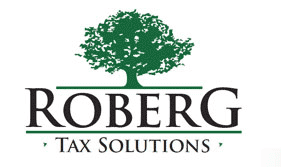This is one of the most difficult questions I get asked every year. I think most people have heard the 10% rule (donate 10% of your income to your church), but what they’re asking me is, “10% of gross, 10% of net after taxes, or 10% of net after my deductions?” And here’s my classic cop-out answer: “You should ask your religious leader.” I always thought that was safe, and different churches have different opinions. (Although I’ve never heard any religious organization say 10% after deductions – just to be clear.) I always thought that referring it back to the church was a good answer until one of my clients came back at me with, “I talked to my minister first and he told me to ask you.”
For a moment I was terrified. If I got this answer wrong, it’s not like a tax return mistake, it’s messing with God. Screw it up and you go to hell, go directly to hell, do not pass go, do not collect $200. And the reason it was so scary was because for this particular person, I felt that she could not even afford 10% of her net income to go to charity, much less 10% of her gross. (Hindsight being 20/20, I think her minister was pretty much thinking the same thing and didn’t want to make a rule that would harm his congregant.) If we used the 10% after deductions rule then nothing would be going to charity and that wasn’t an acceptable answer for my client. So we sat down and worked out a budget for her church donations. I figured that God wanted her to have a roof over her head and food on the table and we went from there. Her tithe didn’t work out to 10% of her income, but she was happy, I was happy, her minister was happy, and I didn’t get struck by lightning—a good sign.
So, how much should you tithe? If your church doesn’t have definitive rules on tithing, I think 10% of your take home pay is the best answer: ten percent into savings, ten percent into charity and the rest to handle your day to day living expenses. Now, if putting 10% into charity means you can’t put food on the table and maintain a roof over your head then we need to get you to a better financial place first. Donate what you can.
What if I don’t go to church? Even if you’re not donating to a religious institution, the idea of 10% going to charity is still a healthy one. There are thousands of worthwhile charitable organizations that need help. And, for many of us, we have friends or family members that need our charity just as much as the United Way or the ASPCA does. Remember, true charity isn’t always a “tax deductible” event.
If I tithe, what’s in it for me? For some people, charitable donations are tax deductible. That’s the obvious answer from a tax blog, right? But more importantly, I find that persons who regularly make charitable donations tend to weather the difficult economic times better. You could argue that’s because persons of faith have their faith to help them through hard times, and there’s certainly a lot of truth to that. But I also find that even people not associated with religious institutions who donate generously seem to fare better in difficult financial times than people who don’t contribute.
I heard someone suggest that it’s the discipline required to donate part of your income to charity that gives people the discipline to handle financial setbacks. I can’t say for sure. I do know that I prepare a lot of tax returns. I prepare a lot of tax returns for people going through bankruptcy and/or foreclosure. What I don’t see on those tax returns is charitable giving. Now you might say, “But, they’re going through bankruptcy, they have no money!” True, but the charitable giving isn’t there in the years before the bankruptcy either.
It’s only anecdotal evidence; I really don’t have hard numbers. I’ve talked with other tax people who’ve noticed the same thing. Perhaps the old adage is true, when you donate to charity, the person you’re helping the most may just be yourself.










